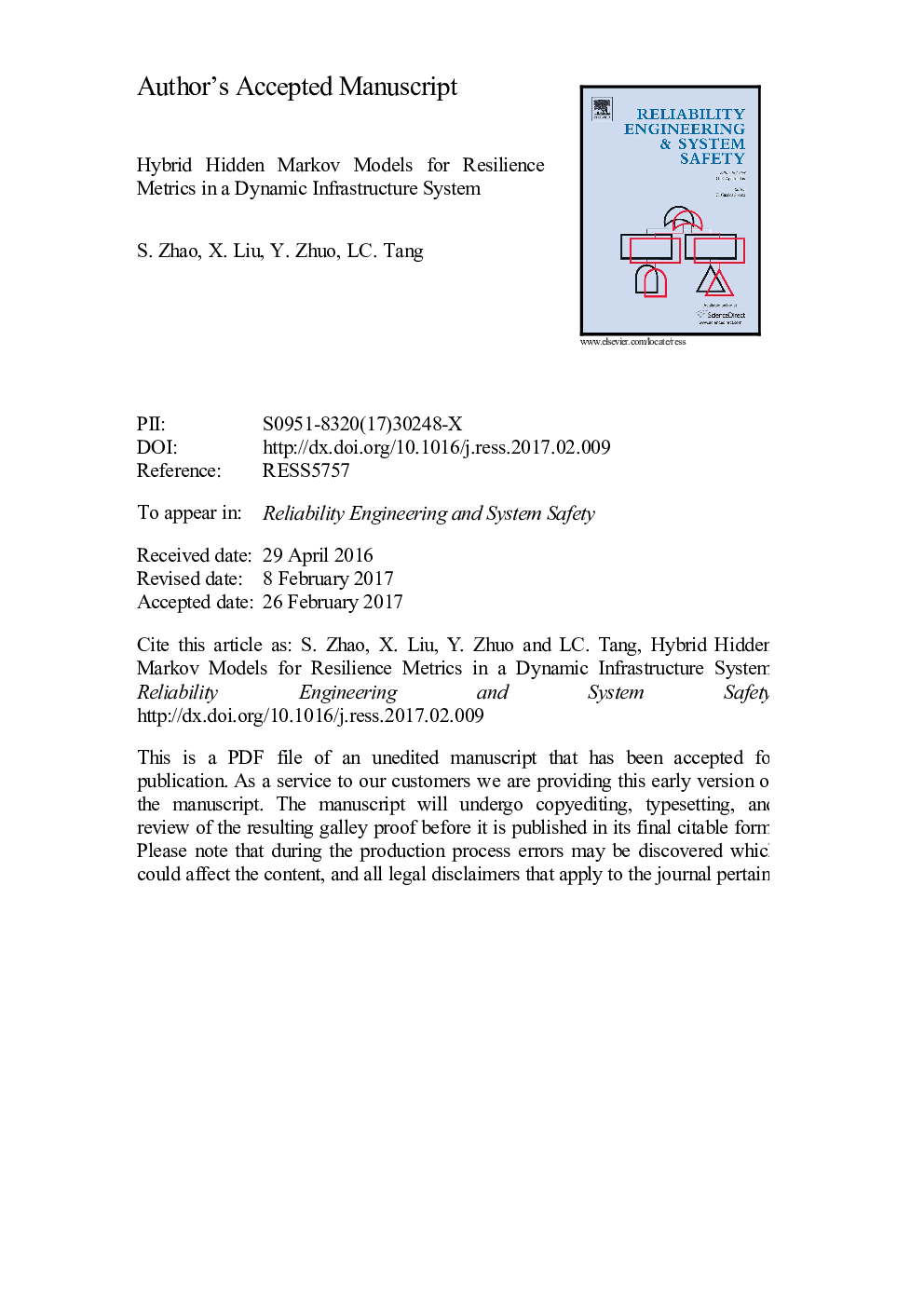| Article ID | Journal | Published Year | Pages | File Type |
|---|---|---|---|---|
| 5019450 | Reliability Engineering & System Safety | 2017 | 33 Pages |
Abstract
Disruptive events triggered by natural disasters, man-made accidents, or violent attacks can lead to significant consequences and losses for networked infrastructure systems. A critical consideration for a disrupted system is enhancing its resilience to rapidly recover to the desired performance level. The nature of the resilience measurement problem can be summarized as the following: (1) system capacities are dependent/interdependent and time-varying; (2) the severity of consequences and potential losses caused by disruptions are associated with uncertainties; (3) system performances depend on resources input/dispatch strategies and system-design attributes; and (4) historical information in major disaster prevention is incomplete. In this study, we propose a resilience analysis framework and a metric for measuring resilience that combines resilience capacities, disruption scenarios, and dispatch strategies. Non-homogeneous Hidden Markov Models (HMM) are designed to evaluate resilience capacities, including adaptive capacity, absorptive capacity, and recovery capacity under different disruption scenarios. Subsequently, an optimized dispatch strategy is proposed to maximize system resilience and ensure the continuity of system functionality. Finally, a case study of a water supply system taken from Shanghai City demonstrates that the proposed approaches are effective for system-resilience assessment.
Related Topics
Physical Sciences and Engineering
Engineering
Mechanical Engineering
Authors
S. Zhao, X. Liu, Y. Zhuo,
